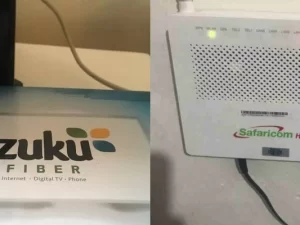How to Get a Fast Internet Speed Test

Many people do not understand their internet speed requirements. To determine your speed needs, consider the devices in your home as well as any daily online activities they participate in.
Experts advise households with moderate usage to aim for at least 25 Mbps as an optimal minimum speed. You should shop around, as some providers offer symmetrical downloads (uploads equal downloads) at additional costs.
1. Speed Tests
An internet speed test can reveal much about how your home network is functioning. They allow you to see exactly which speeds you are paying for and whether they hold up in reality.
However, when performing internet speed tests it’s important to keep several things in mind which could skew the results. Equipment used can make a big difference – such as what type of router it is or whether wireless technology is enabled and connected devices.
What you do on your device while conducting the speed test will also have an impact. Try closing any bandwidth-hungry apps while running tests; additionally, test at different times of day: peak hours typically result in slower speeds while early morning and weekday tests tend to provide faster connections.
2. Bandwidth Caps
When choosing an internet provider, look for one with symmetrical speeds – meaning uploads are as fast as downloads. Cable and fiber providers tend to offer faster upload speeds than DSL or satellite service providers.
Most providers set their upload speeds at approximately 10 Mbps, which is sufficient for most daily uses such as sending photos and videos to friends and family or utilizing video calling services. Some providers do offer higher upload speeds in order to meet more advanced application needs.
Data caps are monthly limits imposed by internet service providers on how much data you can download each month, often known as your monthly usage allowance or usage limits. Your download is measured in bits and bytes; video streaming typically consumes the highest volume. When your data cap is exceeded, providers may impose extra fees or throttle down your connection (throttling). To avoid overage charges or throttling altogether, opt for an internet plan without monthly data limits.
3. Local & Crowd-Sourced Data
Crowdsourcing refers to the practice of gathering information from large numbers of people to complete tasks that would otherwise be difficult or impossible for an individual to perform alone, such as traffic monitoring or navigation systems like Waze. Crowdsourcing has proven invaluable in many fields such as traffic monitoring.
One of the greatest difficulties associated with crowdsourced data collection is that it depends on unknown end devices for collection. These devices may impact network performance by adding variables like battery status and CPU load; or they could change measurements by increasing latency.
Crowdsourced tests often entail using mobile or cellular connections that use up users’ monthly data limits/caps, leading to potentially inaccurate comparisons of results across tools and an understanding of how congestion, peak usage periods and data throttling might influence them. Therefore, standardised, open methods of testing and measurement should be adopted so as to provide more accurate comparisons and provide insight into how test results might be impacted by congestion, peak usage periods and data throttling.
4. Internet Providers
Internet Service Providers (ISPs) offer fast internet connections via cable, fiber, DSL, satellite and more. ISPs often offer tiered download speeds listed on your bill or on their company website; some types may also differ in latency rates to affect how quickly data reaches its destination.
Fast internet speeds are key for the average household when it comes to online entertainment and other activities, including streaming media such as movies or gaming. When selecting an internet plan that meets these needs, however, it is also essential that consideration be given to how many devices connect at any one time and connection needs of individual household devices. A good rule of thumb would be dividing the total number of connected devices in your household by the Internet speed in question – or for optimal streaming or gaming experiences look for plans with at least 100 Mbps download and upload speeds and Gigabit-level plans may also be available!









